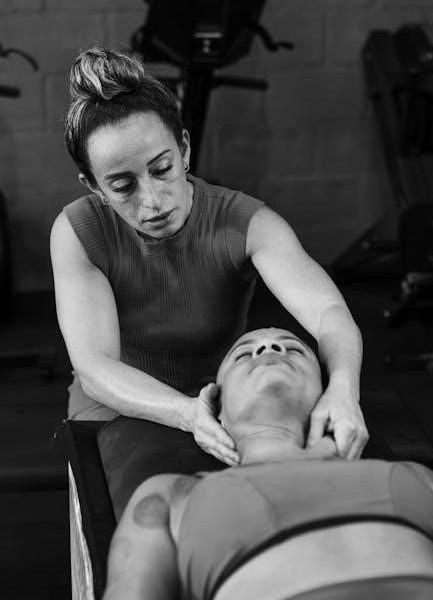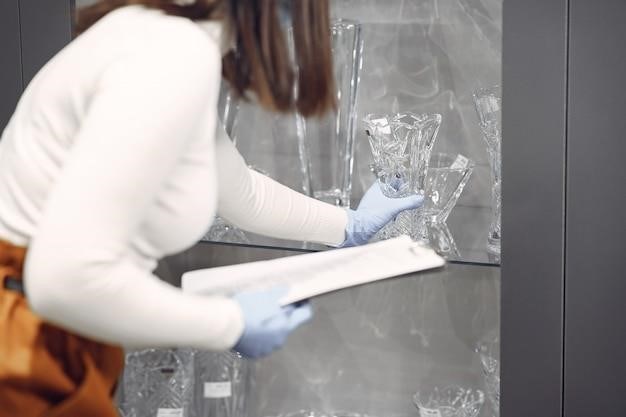Physical therapy is a cornerstone in managing spinal stenosis, offering targeted exercises to alleviate symptoms and improve mobility. A spinal stenosis physical therapy exercises PDF provides structured, accessible routines, enabling patients to perform exercises consistently at home. These resources often include flexion-based movements, strengthening exercises, and stretches, all designed to reduce nerve compression and enhance overall function. By following a well-designed program, individuals can effectively manage their condition and improve their quality of life with guidance from healthcare professionals.
1.1 Overview of Spinal Stenosis and Its Impact
Spinal stenosis is a condition characterized by the narrowing of the spinal canal, leading to nerve compression. It often results from aging, arthritis, or injuries, causing pain, numbness, and weakness in the lower back and legs. This condition significantly impacts daily activities, particularly in older adults, by limiting mobility and reducing quality of life. Effective management is crucial to alleviate symptoms and restore functional abilities, ensuring patients can maintain independence and engage in routine tasks without discomfort.
1.2 Importance of Physical Therapy in Managing Spinal Stenosis
Physical therapy plays a vital role in managing spinal stenosis by addressing pain, improving mobility, and enhancing functional abilities. It focuses on exercises that reduce nerve compression and strengthen supportive muscles. A structured program, often outlined in a spinal stenosis physical therapy exercises PDF, provides clear guidance for patients to follow at home. Regular therapy not only alleviates symptoms but also helps prevent progression of the condition, enabling individuals to maintain independence and enjoy a better quality of life with consistent practice and professional oversight.
1.3 Benefits of Using a Spinal Stenosis Physical Therapy Exercises PDF
A spinal stenosis physical therapy exercises PDF offers numerous benefits, including accessibility and convenience for home-based rehabilitation. It provides a structured, easy-to-follow guide with detailed instructions and visuals, ensuring consistent practice. These resources often include evidence-based exercises tailored to alleviate symptoms, improve mobility, and strengthen muscles. Additionally, they educate patients on proper posture, movement techniques, and safety tips, empowering them to manage their condition effectively. Regular use of such a PDF, combined with professional guidance, can significantly enhance treatment outcomes and long-term spinal health.

Understanding Spinal Stenosis
Spinal stenosis involves narrowing of the spinal canal, compressing nerves and causing pain. A spinal stenosis physical therapy exercises PDF provides structured routines to manage symptoms and improve mobility through targeted exercises.
2.1 Definition and Causes of Spinal Stenosis
Spinal stenosis is a condition characterized by the narrowing of the spinal canal, leading to nerve compression. It often results from aging, arthritis, herniated discs, or spinal injuries. Symptoms include pain, numbness, and weakness, particularly in the lower back and legs. This condition can significantly impact daily activities, especially in older adults. A spinal stenosis physical therapy exercises PDF can provide guidance on managing symptoms through targeted exercises, helping to improve mobility and reduce discomfort effectively.
2.2 Types of Spinal Stenosis: Lumbar, Cervical, and Thoracic
Spinal stenosis is categorized into three main types based on the affected region of the spine. Lumbar spinal stenosis occurs in the lower back, often causing pain or numbness in the legs. Cervical spinal stenosis affects the neck, potentially leading to symptoms in the arms or hands. Thoracic spinal stenosis is less common and involves the mid-back, sometimes causing pain in the chest or abdomen. Understanding the specific type is crucial for tailored management and therapy, as symptoms and impacts vary by location.
2.3 Common Symptoms and Diagnosis
Spinal stenosis often presents with lower back pain, numbness, or tingling in the legs, which may worsen with standing or walking. Symptoms can also include weakness, cramping, or a heavy sensation in the affected areas. Diagnosis typically involves a combination of physical exams, patient history, and imaging tests like MRI or CT scans to confirm nerve compression. Early identification is key to effective management, ensuring timely intervention to alleviate discomfort and prevent progression of the condition.
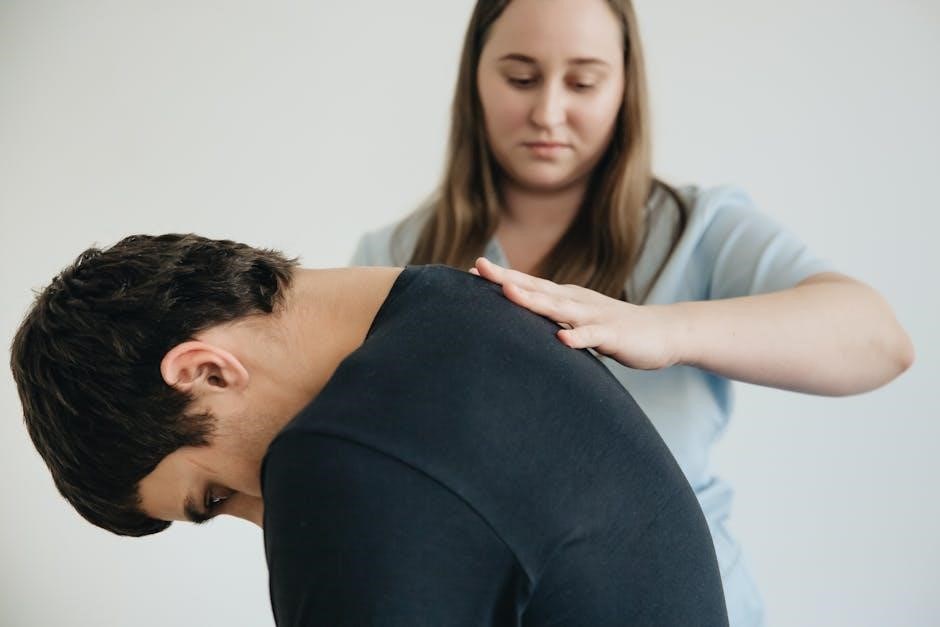
The Role of Physical Therapy in Spinal Stenosis Management
Physical therapy plays a vital role in managing spinal stenosis by combining manual therapy, exercises, and education to reduce pain, improve mobility, and enhance functional abilities. A spinal stenosis physical therapy exercises PDF serves as a valuable resource, providing structured routines that patients can follow at home, ensuring consistency and progress in their rehabilitation journey.
3.1 Goals of Physical Therapy for Spinal Stenosis
The primary goals of physical therapy for spinal stenosis are to reduce pain, improve mobility, and enhance functional abilities. A tailored program focuses on strengthening core muscles, improving flexibility, and promoting proper posture. Exercises such as flexion-based movements and neural mobilization techniques are often emphasized to alleviate nerve compression. Additionally, physical therapy aims to educate patients on avoiding aggravating activities and incorporating safe, effective exercises into their daily routine. A spinal stenosis physical therapy exercises PDF can serve as a valuable resource, providing clear guidance and structure for home-based rehabilitation.
3.2 Key Components of a Physical Therapy Program
A comprehensive physical therapy program for spinal stenosis includes manual therapy to improve mobility and reduce stiffness. Exercise routines focus on flexion-based movements, strengthening core muscles, and enhancing flexibility. Stretching exercises target tight muscles, while aerobic activities promote overall fitness. Balance and proprioceptive training are also essential to prevent falls and improve stability. Patient education on proper posture and movement techniques is a critical component, ensuring long-term management. A spinal stenosis physical therapy exercises PDF often serves as a practical guide, outlining these elements for consistent and effective practice.
3.3 Evidence Supporting Exercise-Based Interventions
Recent studies and systematic reviews highlight the effectiveness of exercise-based interventions for spinal stenosis. A narrative review of trials demonstrates moderate-quality evidence supporting multimodal approaches, including manual therapy and exercise. Flexion-based exercises, such as bending forward, have been shown to reduce pain by opening the spinal canal. Additionally, a randomized controlled trial found that treadmill walking with body weight support is as effective as cycling when added to an exercise program. These findings underscore the benefits of structured exercise routines, often detailed in a spinal stenosis physical therapy exercises PDF, in improving function and reducing symptoms.

Core Exercises for Spinal Stenosis
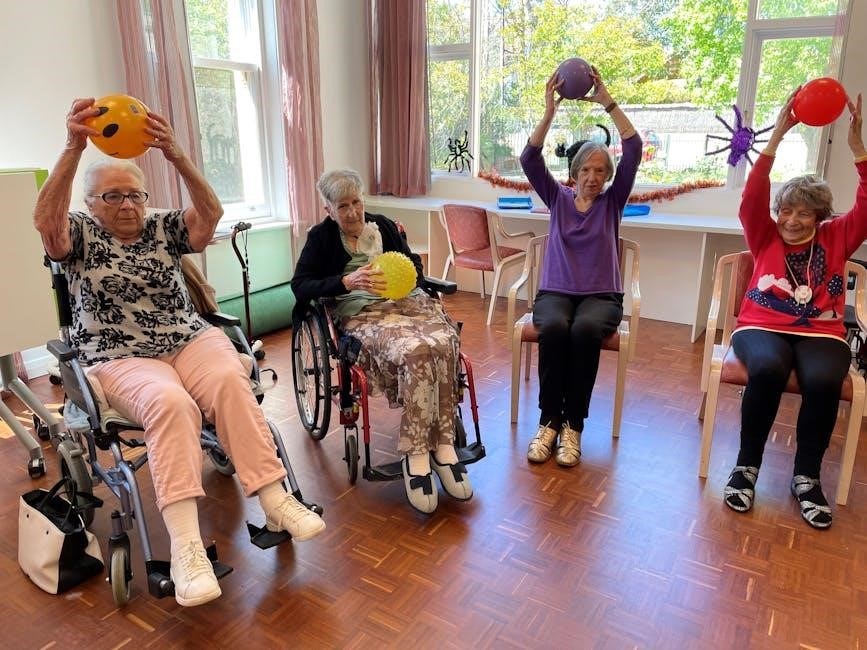
Core exercises, including flexion-based movements, strengthening, and stretching, are essential for spinal stability and symptom relief. A spinal stenosis physical therapy exercises PDF provides structured guidance.
4.1 Flexion-Based Exercises to Alleviate Symptoms
Flexion-based exercises are highly effective for spinal stenosis, as they reduce nerve compression by widening the spinal canal. These exercises involve bending forward, such as seated or standing touches, and can be performed gently to avoid discomfort. A spinal stenosis physical therapy exercises PDF often includes detailed routines like pelvic tilts and cat-cow stretches. Regular practice of these movements can alleviate pain, improve mobility, and enhance daily functioning. Consistency and proper form are key to maximizing benefits and ensuring long-term symptom relief.
4.2 Strengthening Exercises for Spinal Stability
Strengthening exercises are essential for improving spinal stability in spinal stenosis patients. These exercises target core muscles, including abdominals and back extensors, to enhance posture and reduce strain. Examples include bird-dog, bridges, and planks. A spinal stenosis physical therapy exercises PDF often provides detailed routines to build strength without exacerbating symptoms. By focusing on controlled movements, patients can improve spinal support and reduce pain. Regular practice of these exercises promotes long-term stability and prevents further degeneration, ensuring better overall spinal health and functionality.
4.3 Stretching Exercises to Improve Mobility
Stretching exercises are vital for enhancing mobility in spinal stenosis patients by reducing stiffness and improving range of motion. Gentle stretches, such as hamstring and hip flexor stretches, can alleviate tightness that exacerbates symptoms. Nerve glides and cat-cow stretches are also beneficial, as they promote flexibility without putting excessive pressure on the spine. A spinal stenosis physical therapy exercises PDF often includes these stretches with clear instructions, allowing patients to practice safely at home. Regular stretching helps maintain spinal flexibility and reduces discomfort, supporting overall mobility and daily activities.
4.4 Aerobic Exercises to Enhance Overall Function
Aerobic exercises, such as walking and cycling, are essential for improving cardiovascular health and overall function in spinal stenosis patients. These low-impact activities enhance endurance without exacerbating symptoms. Walking, especially in a flexed posture, can help reduce nerve compression and improve mobility. A spinal stenosis physical therapy exercises PDF often includes aerobic routines tailored to individual capabilities, ensuring safe and effective progression. Regular aerobic exercise not only boosts physical function but also contributes to better mental well-being and long-term symptom management.
4.5 Proprioceptive and Balance Training
Proprioceptive and balance training is crucial for improving spinal stability and posture in spinal stenosis patients. Exercises like single-leg stands, heel-to-toe walking, and wobble board activities enhance neuromuscular control. A spinal stenosis physical therapy exercises PDF often includes these routines, providing clear instructions for safe practice. These exercises help reduce the risk of falls and improve overall functional mobility, allowing patients to maintain independence and confidence in daily activities while managing their condition effectively.
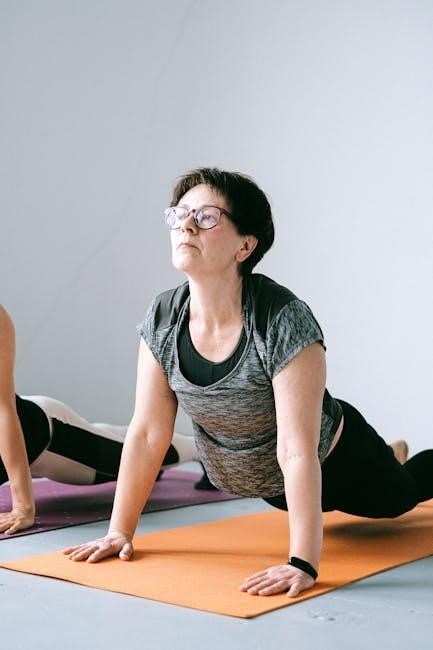
Creating a Personalized Exercise Program
A personalized exercise program for spinal stenosis involves assessing individual needs, tailoring exercises to specific goals, and monitoring progress. A spinal stenosis physical therapy exercises PDF helps structure routines, ensuring safety and effectiveness while addressing patient-specific requirements.
5.1 Assessing Individual Needs and Severity of Stenosis
Assessing individual needs and the severity of spinal stenosis is crucial for creating an effective exercise program. A thorough evaluation includes reviewing medical history, symptoms, and physical limitations. Imaging results help determine the extent of nerve compression and spinal narrowing. This assessment guides the selection of appropriate exercises, ensuring they are safe and tailored to the patient’s condition. A spinal stenosis physical therapy exercises PDF can provide structured routines based on these assessments, promoting progress and symptom relief while minimizing risks.
5.2 Tailoring Exercises to Patient-Specific Goals
Tailoring exercises to patient-specific goals ensures a personalized approach to managing spinal stenosis. Each patient’s symptoms, physical limitations, and lifestyle are considered to create a targeted program. For example, flexion exercises may be prioritized for those with nerve compression, while strengthening exercises focus on improving spinal stability. A spinal stenosis physical therapy exercises PDF can help structure these routines, offering clear instructions and progress tracking. This customization enhances effectiveness and motivates patients to adhere to their treatment plan, ensuring safer and more meaningful outcomes under professional guidance;
5.3 Monitoring Progress and Adjusting the Program
Regular monitoring of a patient’s progress is essential to ensure the effectiveness of their spinal stenosis exercise program. A spinal stenosis physical therapy exercises PDF can serve as a valuable tool for tracking improvements and identifying areas needing adjustment. Patients should provide feedback on pain levels and functional changes, allowing therapists to modify exercises accordingly. Adjustments may include increasing exercise intensity, introducing new movements, or focusing on specific muscle groups. This iterative process ensures the program remains tailored to the patient’s evolving needs, promoting optimal recovery and long-term management of symptoms.
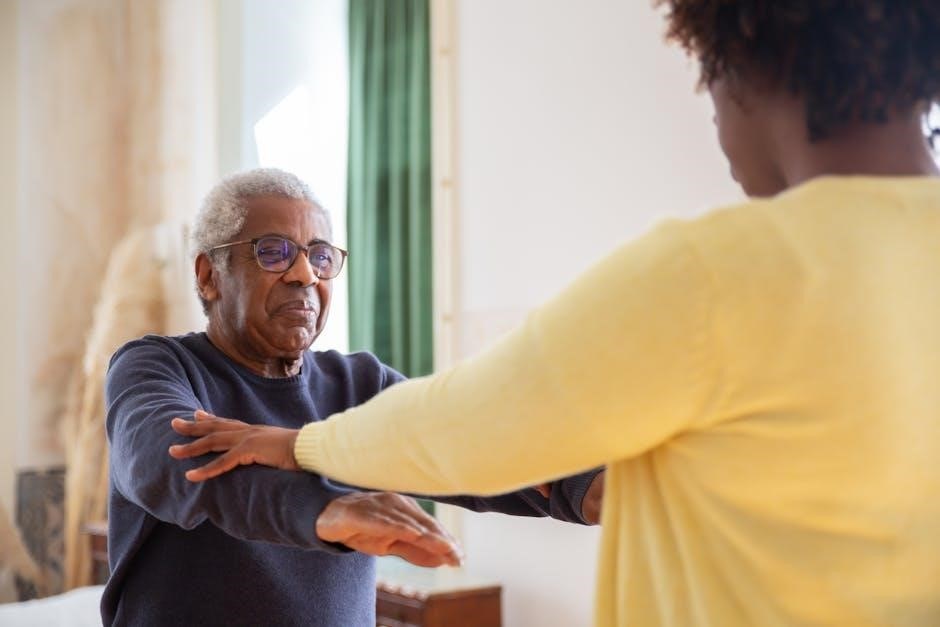
Home Exercises for Spinal Stenosis
Home exercises, such as flexion-based movements and nerve glides, can effectively manage spinal stenosis symptoms. A spinal stenosis physical therapy exercises PDF provides clear, at-home routines to improve mobility and reduce pain, ensuring consistency and safety in treatment.
6.1 Simple Exercises That Can Be Done Without Equipment
Simple exercises like pelvic tilts, knee extensions, and seated forward bends can alleviate spinal stenosis symptoms without equipment. These movements improve flexibility and reduce nerve compression. Standing or sitting stretches, such as cat-cow or gentle twists, also promote spinal mobility. Nerve glides and hamstring stretches are effective for relieving tightness and improving circulation. These exercises are low-impact, easy to perform, and can be tailored to individual needs, making them ideal for home routines. Consistency is key to achieving long-term benefits and managing symptoms effectively.
6.2 Using a Spinal Stenosis Physical Therapy Exercises PDF at Home
A spinal stenosis physical therapy exercises PDF is a valuable resource for home-based rehabilitation. It provides clear, structured routines with visual guides and instructions, ensuring exercises are performed safely and effectively. These PDFs often include flexion-based stretches, strengthening exercises, and mobility-enhancing movements. They allow patients to follow a consistent program without equipment, promoting independence and convenience. By adhering to the exercises outlined in the PDF, individuals can manage symptoms, improve posture, and enhance overall spinal function from the comfort of their homes.
6.3 Tips for Maintaining Consistency and Safety
To maintain consistency and safety while performing spinal stenosis exercises at home, start with gentle movements and gradually increase intensity. Use a spinal stenosis physical therapy exercises PDF as a guide to ensure proper form and technique. Consult with a physical therapist to tailor exercises to your specific needs and avoid aggravating activities. Listen to your body and rest when needed. Track progress to stay motivated and adjust routines as symptoms improve. Prioritize safety to prevent overexertion and promote long-term recovery.
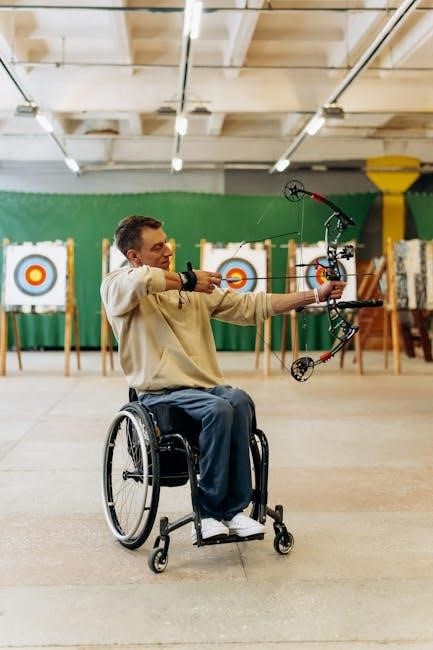
Advanced Physical Therapy Techniques
Advanced techniques include manual therapy, neural mobilization, and assistive devices to enhance spinal mobility and reduce nerve compression. These methods, guided by a spinal stenosis physical therapy exercises PDF, can improve treatment outcomes and patient functionality.
7.1 Manual Therapy for Improved Mobility
Manual therapy is a hands-on approach used to enhance spinal mobility and reduce stiffness in patients with spinal stenosis. Techniques such as joint mobilization and soft tissue work target the affected areas to improve intervertebral motion and relieve nerve compression. When combined with exercises, manual therapy can significantly improve functional outcomes. A spinal stenosis physical therapy exercises PDF often includes guidance on these advanced techniques, ensuring patients and therapists have a structured plan to address mobility limitations effectively.
7.2 Neural Mobilization Techniques

Neural mobilization techniques focus on improving the mobility of nerves affected by spinal stenosis. These exercises, such as nerve glides, aim to reduce tension and restore normal nerve movement. By addressing nerve compression, patients can experience relief from symptoms like numbness and pain. A spinal stenosis physical therapy exercises PDF often includes detailed instructions for these techniques, ensuring patients can perform them safely and effectively. Regular practice enhances nerve function and supports long-term management of spinal stenosis.
7.3 Incorporating Assistive Devices for Support
Assistive devices play a crucial role in supporting patients with spinal stenosis during physical therapy. Tools like canes, walkers, and orthotics can reduce pressure on the spine and improve mobility. These devices help patients maintain proper posture and perform exercises safely. A spinal stenosis physical therapy exercises PDF often includes recommendations for using assistive devices, ensuring patients can incorporate them effectively into their routines. By leveraging these tools, individuals can enhance their stability and confidence during rehabilitation, ultimately improving their overall functional ability and reducing discomfort.
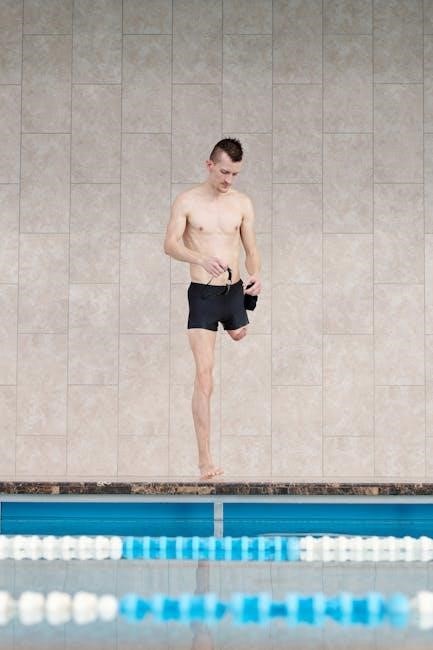
The Importance of Education in Physical Therapy
Education empowers patients to understand their condition, adopt proper posture, and perform exercises safely. A spinal stenosis physical therapy exercises PDF serves as a valuable resource, enhancing adherence and outcomes.
8.1 Patient Education on Proper Posture and Movement
Patient education is vital for managing spinal stenosis, focusing on proper posture and movement techniques to reduce nerve compression. Teaching patients to maintain a neutral spine position and avoid aggravating postures can alleviate symptoms. Spinal stenosis physical therapy exercises PDF guides often include visual aids and instructions for home use, ensuring patients understand how to perform exercises safely. This education empowers individuals to take an active role in their recovery, promoting long-term self-management and improving overall mobility and comfort.
8.2 Teaching Patients to Avoid Aggravating Activities
Teaching patients to identify and avoid activities that exacerbate spinal stenosis symptoms is crucial for effective management. Activities involving prolonged standing, bending, or heavy lifting often worsen discomfort. A spinal stenosis physical therapy exercises PDF can provide clear guidelines on modifying daily tasks to reduce strain. Educating patients on proper posture and movement during routine activities helps minimize nerve compression. This empowerment fosters awareness and encourages patients to adopt lifestyle changes, promoting long-term symptom relief and improved functional ability.
8.3 Promoting Long-Term Self-Management Strategies
Promoting long-term self-management strategies empowers patients to take control of their spinal stenosis symptoms. A spinal stenosis physical therapy exercises PDF serves as a valuable resource, offering structured routines and educational content. Patients learn to incorporate exercises into their daily lives, monitor progress, and adjust activities to prevent flare-ups. Education on proper posture, movement, and lifestyle modifications fosters independence and confidence; Consistent adherence to these strategies, combined with regular follow-ups, ensures sustained improvement and enhances overall well-being for individuals managing spinal stenosis.
In conclusion, spinal stenosis physical therapy exercises, guided by a spinal stenosis physical therapy exercises PDF, offer effective symptom relief and improved mobility. Patients are encouraged to consult professionals for personalized plans and ongoing support, ensuring long-term management and enhanced quality of life.
9.1 Summary of Key Takeaways
Physical therapy is a vital component in managing spinal stenosis, with exercises tailored to reduce pain and improve mobility. A spinal stenosis physical therapy exercises PDF provides a structured guide for home routines, emphasizing flexion-based movements, strengthening, and stretching. Evidence supports the effectiveness of exercise-based interventions, often comparable to surgical outcomes. Patient education and adherence to personalized programs are crucial for long-term symptom relief and enhanced quality of life, ensuring safe and consistent practice under professional guidance.
9.2 Encouraging Patients to Seek Professional Guidance
Patients with spinal stenosis should be encouraged to consult with physical therapists or healthcare providers to develop a personalized exercise plan. While a spinal stenosis physical therapy exercises PDF can serve as a valuable resource, professional guidance ensures exercises are performed safely and effectively. A tailored approach addresses individual needs, preventing overexertion and minimizing symptom aggravation. Regular follow-ups with healthcare professionals further enhance the effectiveness of the program, promoting long-term management and improved quality of life for those with spinal stenosis.
9.3 The Role of Ongoing Physical Therapy in Long-Term Management
Ongoing physical therapy plays a vital role in the long-term management of spinal stenosis, helping to maintain spinal stability and mobility. Regular exercises, such as flexion-based movements and strengthening routines, can prevent symptom recurrence and improve overall function. A spinal stenosis physical therapy exercises PDF provides a structured guide for continued practice, ensuring consistency and safety. By adhering to a tailored program, patients can effectively manage their condition, reduce pain, and enhance their quality of life over time with professional oversight and self-care strategies.
